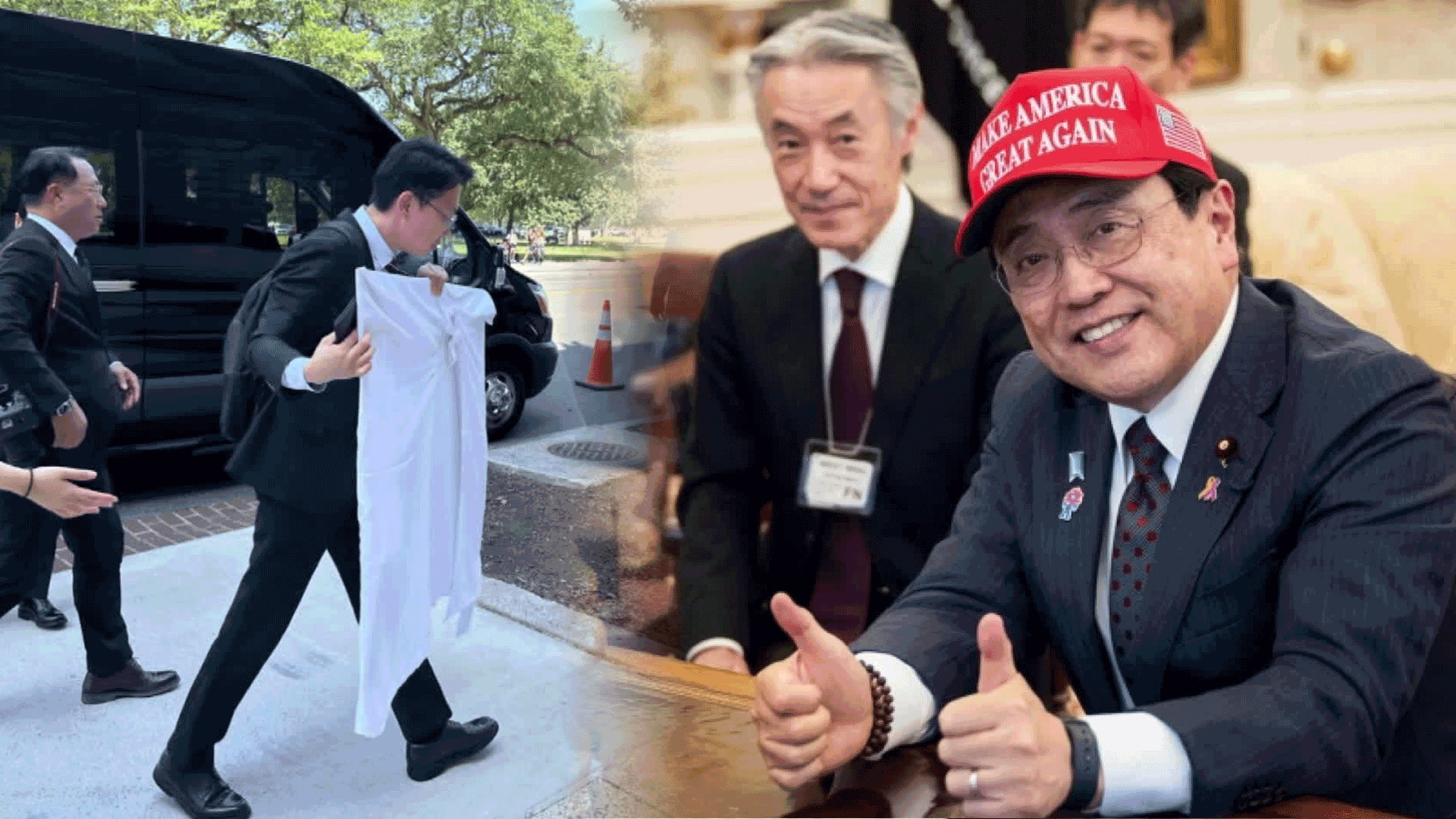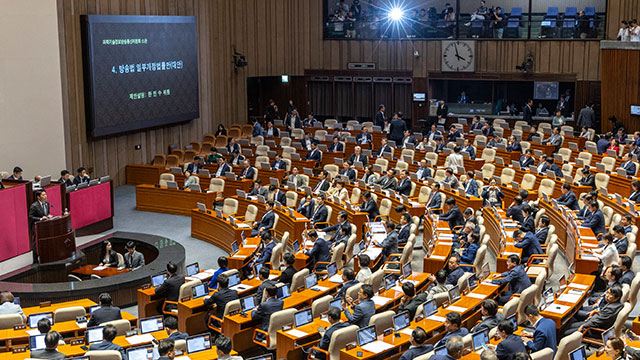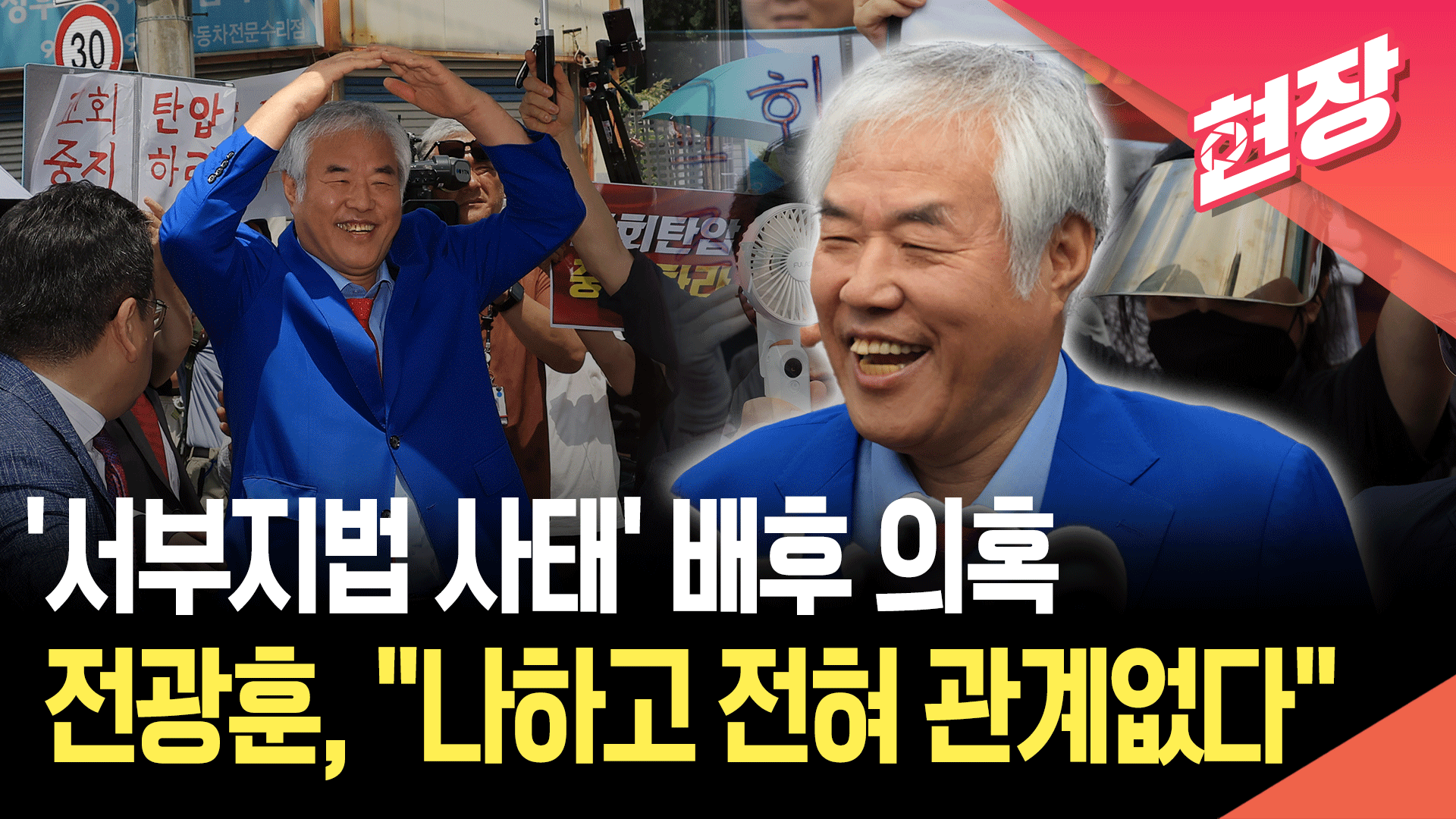[Anchor]
The devices that played a crucial role in concluding the tariff negotiations have been confirmed in more detail.
The shipbuilding cooperation project named "MASGA" and a large explanatory board that showcased it at a glance garnered a positive response.
Our negotiation team reportedly created a "MASGA" hat, similar to Trump's MAGA hat.
Reporter Park Kyung-jun has the story.
[Report]
President Trump, who campaigned on the revival of the U.S. shipbuilding industry.
[Donald Trump/President of the United States/March: "We don't make them anymore very much. But we're going to make them very fast, very soon. It will have a huge impact."]
The negotiation team, which set the shipbuilding cooperation project as a key bargaining chip in the negotiations, first sought a catchy name considering Trump's intuitive personality.
After reviewing names that utilized "ship" like "Chorus Partnership," they adopted the name "MASGA," inspired by the political slogan that brought Trump his election victory.
President Trump had the Japanese negotiation team, who visited the White House to prevent tariff bombs, wear "Make America Great Again" hats.
The government also prepared red hats with "MASGA" written on them, considering Trump's love for these hats.
However, to persuade Commerce Secretary Lutnick, the first hurdle in the negotiations, they deployed a gigantic explanatory board measuring 1 meter by 1 meter.
The strategy was that persuasion should be concise.
The single image included the base for building ships on the maps of Korea and the U.S., the current shipbuilding capacity of the U.S., and ways to close the gap with China, as well as the job creation effects.
Upon seeing this, SecretaryLutnick said it was a "great idea" and invited the negotiation team to his home in New York, marking the beginning of the negotiations.
[Kim Jung-kwan/Minister of Trade, Industry and Energy: "If we only say unfavorable things, it would just be 'let's go with a 25% tariff.' There were processes where we had to hold on when he tried to get up from his chair, and during that process, it was really nerve-wracking..."]
The negotiations mobilized various ideas.
While they extinguished the urgent fire with a 15% tariff, the possibility that the U.S. might present new tariff cards again cannot be ruled out.
This is KBS News, Park Kyung-jun.
The devices that played a crucial role in concluding the tariff negotiations have been confirmed in more detail.
The shipbuilding cooperation project named "MASGA" and a large explanatory board that showcased it at a glance garnered a positive response.
Our negotiation team reportedly created a "MASGA" hat, similar to Trump's MAGA hat.
Reporter Park Kyung-jun has the story.
[Report]
President Trump, who campaigned on the revival of the U.S. shipbuilding industry.
[Donald Trump/President of the United States/March: "We don't make them anymore very much. But we're going to make them very fast, very soon. It will have a huge impact."]
The negotiation team, which set the shipbuilding cooperation project as a key bargaining chip in the negotiations, first sought a catchy name considering Trump's intuitive personality.
After reviewing names that utilized "ship" like "Chorus Partnership," they adopted the name "MASGA," inspired by the political slogan that brought Trump his election victory.
President Trump had the Japanese negotiation team, who visited the White House to prevent tariff bombs, wear "Make America Great Again" hats.
The government also prepared red hats with "MASGA" written on them, considering Trump's love for these hats.
However, to persuade Commerce Secretary Lutnick, the first hurdle in the negotiations, they deployed a gigantic explanatory board measuring 1 meter by 1 meter.
The strategy was that persuasion should be concise.
The single image included the base for building ships on the maps of Korea and the U.S., the current shipbuilding capacity of the U.S., and ways to close the gap with China, as well as the job creation effects.
Upon seeing this, SecretaryLutnick said it was a "great idea" and invited the negotiation team to his home in New York, marking the beginning of the negotiations.
[Kim Jung-kwan/Minister of Trade, Industry and Energy: "If we only say unfavorable things, it would just be 'let's go with a 25% tariff.' There were processes where we had to hold on when he tried to get up from his chair, and during that process, it was really nerve-wracking..."]
The negotiations mobilized various ideas.
While they extinguished the urgent fire with a 15% tariff, the possibility that the U.S. might present new tariff cards again cannot be ruled out.
This is KBS News, Park Kyung-jun.
■ 제보하기
▷ 카카오톡 : 'KBS제보' 검색, 채널 추가
▷ 전화 : 02-781-1234, 4444
▷ 이메일 : kbs1234@kbs.co.kr
▷ 유튜브, 네이버, 카카오에서도 KBS뉴스를 구독해주세요!
- Tactics behind tariff deal
-
- 입력 2025-08-02 01:08:13

[Anchor]
The devices that played a crucial role in concluding the tariff negotiations have been confirmed in more detail.
The shipbuilding cooperation project named "MASGA" and a large explanatory board that showcased it at a glance garnered a positive response.
Our negotiation team reportedly created a "MASGA" hat, similar to Trump's MAGA hat.
Reporter Park Kyung-jun has the story.
[Report]
President Trump, who campaigned on the revival of the U.S. shipbuilding industry.
[Donald Trump/President of the United States/March: "We don't make them anymore very much. But we're going to make them very fast, very soon. It will have a huge impact."]
The negotiation team, which set the shipbuilding cooperation project as a key bargaining chip in the negotiations, first sought a catchy name considering Trump's intuitive personality.
After reviewing names that utilized "ship" like "Chorus Partnership," they adopted the name "MASGA," inspired by the political slogan that brought Trump his election victory.
President Trump had the Japanese negotiation team, who visited the White House to prevent tariff bombs, wear "Make America Great Again" hats.
The government also prepared red hats with "MASGA" written on them, considering Trump's love for these hats.
However, to persuade Commerce Secretary Lutnick, the first hurdle in the negotiations, they deployed a gigantic explanatory board measuring 1 meter by 1 meter.
The strategy was that persuasion should be concise.
The single image included the base for building ships on the maps of Korea and the U.S., the current shipbuilding capacity of the U.S., and ways to close the gap with China, as well as the job creation effects.
Upon seeing this, SecretaryLutnick said it was a "great idea" and invited the negotiation team to his home in New York, marking the beginning of the negotiations.
[Kim Jung-kwan/Minister of Trade, Industry and Energy: "If we only say unfavorable things, it would just be 'let's go with a 25% tariff.' There were processes where we had to hold on when he tried to get up from his chair, and during that process, it was really nerve-wracking..."]
The negotiations mobilized various ideas.
While they extinguished the urgent fire with a 15% tariff, the possibility that the U.S. might present new tariff cards again cannot be ruled out.
This is KBS News, Park Kyung-jun.
The devices that played a crucial role in concluding the tariff negotiations have been confirmed in more detail.
The shipbuilding cooperation project named "MASGA" and a large explanatory board that showcased it at a glance garnered a positive response.
Our negotiation team reportedly created a "MASGA" hat, similar to Trump's MAGA hat.
Reporter Park Kyung-jun has the story.
[Report]
President Trump, who campaigned on the revival of the U.S. shipbuilding industry.
[Donald Trump/President of the United States/March: "We don't make them anymore very much. But we're going to make them very fast, very soon. It will have a huge impact."]
The negotiation team, which set the shipbuilding cooperation project as a key bargaining chip in the negotiations, first sought a catchy name considering Trump's intuitive personality.
After reviewing names that utilized "ship" like "Chorus Partnership," they adopted the name "MASGA," inspired by the political slogan that brought Trump his election victory.
President Trump had the Japanese negotiation team, who visited the White House to prevent tariff bombs, wear "Make America Great Again" hats.
The government also prepared red hats with "MASGA" written on them, considering Trump's love for these hats.
However, to persuade Commerce Secretary Lutnick, the first hurdle in the negotiations, they deployed a gigantic explanatory board measuring 1 meter by 1 meter.
The strategy was that persuasion should be concise.
The single image included the base for building ships on the maps of Korea and the U.S., the current shipbuilding capacity of the U.S., and ways to close the gap with China, as well as the job creation effects.
Upon seeing this, SecretaryLutnick said it was a "great idea" and invited the negotiation team to his home in New York, marking the beginning of the negotiations.
[Kim Jung-kwan/Minister of Trade, Industry and Energy: "If we only say unfavorable things, it would just be 'let's go with a 25% tariff.' There were processes where we had to hold on when he tried to get up from his chair, and during that process, it was really nerve-wracking..."]
The negotiations mobilized various ideas.
While they extinguished the urgent fire with a 15% tariff, the possibility that the U.S. might present new tariff cards again cannot be ruled out.
This is KBS News, Park Kyung-jun.
-
-

박경준 기자 kjpark@kbs.co.kr
박경준 기자의 기사 모음
-
이 기사가 좋으셨다면
-
좋아요
0
-
응원해요
0
-
후속 원해요
0











![[단독] 민주당 ‘검찰개혁안’ 입수… 중수청, 행안부 산하로 결론](/data/fckeditor/new/image/2025/08/05/316901754372034845.jpg)



이 기사에 대한 의견을 남겨주세요.